How to sell internationally on eBay
Selling internationally on eBay can be extremely rewarding. There are 182 million active eBay users worldwide (and counting) across 23 global sites. Hence, if you're only selling to your home market, you're missing out on literally millions of potential buyers.
Before deciding what the right thing is for you and your eBay store, you should know that it does take upfront work to access all that untapped potential earnings. But here's a secret, it may be easier than you think.
Quick view: International sales on eBay
Simply put, selling internationally on eBay starts with publishing listings with international shipping destinations, such as the United Kingdom, Europe, New Zealand, Asia, Canada or the US.
To increase international sales on eBay, you have three options:
- Shipping internationally
- Listing on other "local" eBay sites
- eBay Global Shipping Programme
Let's look at them briefly:
Shipping internationally
The basic shipping internationally option makes your listings available to buyers in certain foreign countries or even worldwide. All you have to do is add international postage to the listings in your home eBay site.
When international buyers use your local website (for example, ebay.com.au or ebay.co.uk), they will be able to see the shipping cost to their country. It is the simplest option, but also the most growth limiting option. More on this later on.
International site visibility upgrade
We’d recommend coupling the international postage option with the international site visibility upgrade. It's an optional upgrade that ensures your eBay.com, eBay.ca, eBay.co.uk and eBay.com.au listings are visible in top-level search results on the other English-based eBay sites.
Listing on other eBay sites
Listing on other eBay sites is a more advanced option for selling internationally. As eBay user IDs are universal, you can use the same user information to log in to international eBay sites. Then, you can create listings for each market, just like you would do in your local store.
The difference is that these listings will be in their respective local languages and pricing can be tailored to that market – both of which increase the likelihood of international sales.
As you're probably guessing, this comes with a set of challenges, from localisation to regulations. Don't panic! We will explore this in more detail a bit further down.
eBay's Global Shipping Program
First things first: the Global Shipping Programme (GSP) is only available to UK and US business sellers who have a seller rating of Above Standard and higher. GSP allows you to treat every international sale as domestic because you ship your products domestically to a fulfilment centre. From then on, eBay will make sure your parcel reaches the client wherever they are in the world.
All in all, it's very convenient and helpful to anyone looking to grow an international brand with eBay.
Listing your products on eBay International: an overview
If only it were as simple as choosing the shipping programme. Yes, that's a big part of it. But to make a successful transition to international eBay sites, there are many more factors that you need to consider.
That includes the basics, which are the 4 Ps of Marketing:
- Pricing
- Product
- Promotion
- Placement
As well as everything else that has something to do with your business' internal processes:
- Customer Support
- Listing
- Content
- eBay's Search Engine Optimisation
- Optimisation tools
- Inventory
- Metrics
- Competition
And marketplace and country environment:
- International payment requirements
- Compliance with international selling and tax laws
Below, we take a close look and explain how each of them impacts your ability to sell on eBay internationally.
Pricing
Coming up with the right eBay pricing is probably the most stressful part, so let's start there.
How do you set an eBay pricing strategy for a foreign market?
At first, it's very similar to setting the price at your home market: you need to consider your costs, taxes and desired profit margin. But then you also have to account for different fees and added costs like shipping insurance or currency exchange.
With almost every sale, take into account the cost of:
- The item
- Shipping insurance to a foreign country (recommended)
- Packaging
- Shipping and handling
- eBay fees
- Payment processing fees (such as those charged by PayPal)
- Customs fees on arrival (except with GSP)
Penetration pricing
Next comes the strategy. One way to enter a new market is by pricing your items low. This tactic is called penetration pricing. Yes, you may start with a small or nonexistent profit margin. But this is a long term strategy.
The more sales you generate, the higher you climb in eBay's default organic search results in that country accumulating more reviews. Once you've established yourself as a trustworthy eBay seller, you can gradually increase your prices while maintaining a proper search placement.
Research the market
How do you find the middle ground price in a new market and (likely) a new currency? Start by analysing similar listings.
Here's how.
Use eBay's Advanced Search function to find out about sales performance for items like the ones you're selling.
- Go to Advanced Search.
- Enter keywords that describe your item and add in details like price range, product condition, and shipping options.
- Choose Sold listings and select Search.
Be as specific as possible in your search. It's the best way to figure out what prices buyers are happy with, their preferred shipping options and other listing details. You don't need to copy your competition's pricing. This tactic is just a starting point to learn more about customers preferences.
Decide which type of listing is better for you on eBay: auction-style or fixed price?
Choose the auction format if you're selling an in-demand item. An auction can generate a profitable bidding war. If you're selling something trendy, in low supply or a collectable, this format can work to your advantage. Or if you're finding it hard to establish a fixed list price that works for the new market. Putting your products up for auction is a great way to find out what buyers are willing to pay.
Go with the fixed price if you know, based on your market research, that your buyers prefer it than bidding. Fixed price is also recommended if you want to:
- Sell items for a consistent amount each time
- Get paid sooner (as you can select PayPal as the payment option)
- Build your business steadily.
Product
When you decide to sell on eBay internationally with your usual product catalogue, you must be aware of possible issues:
Regional compatibility. Some items vary from country to country. Plugs on electrical items and wattage are two of the most noticeable differences. But there are also things like keyboards with different characters, DVDs and games consoles that are regionally locked.
Product standards. Bedsheets that you successfully sell in the UK would not work in the US because standard mattress sizes differ. So do appropriate research into product standards in your target markets to ensure market fit.
Regional regulations. Consider all legal and industry requirements on intellectual property rights, product safety, environmental, health and product compliance, marking and labels. In the EU, for example, CE is a mandatory conformance mark on medical devices, toys, personal protective equipment and so on.
Import restrictions. For example, Australia prohibits used bedding, like sheets. Peru prohibits used clothing. Italy has 130 prohibitions, including anything made from leather and anything made with gold. Here are some examples of items that may be legally prohibited or restricted, or that violate eBay policies:
Check this list compiled by the USPS with all legally restricted items by country.
If you're specifically sourcing products for new markets, here are some statistics and tools to steer you in the right direction.
- Electronics & Accessories is the top-selling product category on eBay. 16.4% of all items sold on eBay are in this category.
- Bluetooth enabled products. Five of the 12 most-sold electronic items on eBay offer Bluetooth capabilities.
- Clothing & Accessories is the second most successful category, with 13.8% of all products sold.
- You may also want to rely on eBay to find the best selling items in the UK, US, Germany and Australia. Use the Explore eBay tool.
- Use Terapeak, an eBay insights tool, to get an overview of which products and categories are popular.
- Crazylister provides an extensive and detailed list of top-selling items on eBay
- Web Retailer offers a comprehensive list of the best selling items on eBay in 2020.
Promotion
The challenges of entering a new market and forging a trustworthy brand are very much the same as in your domestic market. Take the time to get to know your audience and use the eBay tools at your disposal, as well as the necessary digital marketing arsenal.
Naturally, in your domestic market, you know the language and the audience. So imagine the following tips are all framed within the context of localisation. Translating your listing details is mandatory when expanding to new countries.
For large catalogues or premium products, opening a branded eBay Store gives you access to a powerful suite of tools. It's also a great way to boost your brand's trustworthiness in a new market. An eBay Store is like a fully customisable website within eBay. You can drive traffic to it from Social Media, relevant blogs and online advertising like Google Ads.
Aim for low-cost organic visitors as well. Do that by optimising your listings for eBay's internal search engines as well as external ones like Google and Bing. Use a variety of carefully chosen keywords that you know your potential clients use to find products like yours.
If you're selling on ebay.com, ebay.co.uk, ebay.de or ebay.com.au, you may use promoted listings to boost the visibility of your items in the search results and get ad placements in prominent locations across eBay.
If you're on ebay.com, you're also able to use Promotions Manager. This tool lets you create custom discounts and coupons, which is a great way to incentivise buyers to visit your store.
Placement
With eBay, there are two main options. As we discussed above, some sellers list products on their default local site and add international postage destinations to target countries. Other sellers list on international eBay sites directly, even if the products are in a different region.
eBay local site with international postage
This option makes international growth on eBay seem easy, but looks can be deceiving. Checking the international postage box on your listing can be an excellent way to test sales demand. However, it's not a viable long-term option.
Why is that? First of all, you have to translate your listings to the local language. Unless you are a top rated seller, forget about achieving a good ranking on the "Best Match" results. Even though this option places you in foreign buyers' search results, you won't get nearly as many views as your local competitors. After all, they have listings with optimised, localised content and who come with previous sales and a good track record.
Another reason is pricing. When you choose international postage, the prices of your products will automatically show up in the local currency. Currency rates vary daily, which can be a problem for your finances and strange for the buyer. Local listing allows you to avoid these inconsistencies.
Many buyers will also likely filter out international items. Customers tend to look for cheap, quick shipping options that are less of a hassle in terms of import customs. These filters can impact your visibility in the marketplace and less views = less sales.
Listing on international eBay sites
Sellers can list items on any or all of the 23 international eBay sites with the same user ID - as long as they meet a few requirements.
The benefits are clear. You get direct exposure to your target markets, and you're able to control precisely how millions of new buyers view your products.
As you have the same user ID to sell across international eBay sites, new customers will be able to see your feedback scores. So if you already have a good track record at home, that's an advantage you hold over a new local seller.
As your products will be appearing in the default search results for a particular country’s eBay site, you get to compete on a more even playing field. In essence, your brand gets room to grow and become established.
Naturally, this comes with a new set of responsibilities. If you are listing in the local language, customers expect you to speak in their language as well. So consider offering customer support in that language (remember Communication is one of the review factors). You will also have to deal with arranging international shipping, completing customs information and managing the expectations of buyers with late deliveries.
Every time you list your products on a new global site, you will be incurring additional listing fees.
Listing items in this way requires you to be aware of different rules and regulations. Buyer protection policies tend to vary between countries and the timelines for the Money Back Guarantee are shorter for eBay buyers in the UK compared to the US, for example.
Customer Support
A global brand comes with global responsibilities. When selling internationally, all internal processes need to be adapted, including Customer Support.
Perhaps the best way to build a trustworthy business in a new market is to provide top-notch customer support. On eBay, this means optimising returns. When you speed up the entire return/refund process, you increase buyer satisfaction.
Here are a few tips:
Accept returns automatically. In your Returns preferences, you're able to set up return rules in advance so that buyers can automatically receive refunds or refund approvals. For example, it's a good idea to offer immediate refunds for clothes or shoes that don't fit. A Return rule can make this happen without you having to step in.
Available eBay Returns policies:
- No returns
- 30-day buyer-paid returns
- 30-day free returns
- 60-day buyer-paid returns
- 60-day free returns
Offer replacements and exchanges. Have had complaints about defective items? Does international shipping wreak havoc on your packaging? It's a good idea to state that you offer replacements. Occasionally, some buyers are more interested in exchanging for another item so you may provide exchanges with as well.
Free returns and longer return windows are known to lower buyer inhibitions and boost sales. If they know they can return for free eventually, they'll have far more good reasons to buy. eBay research shows that when sellers change return policies from no returns to 30-day free-returns, conversions increase by 17%.
Then, of course, it's up to you to make sure they won't want to return.
eBay Money Back Guarantee is one of the reasons customers enjoy eBay. They know that even if the seller doesn't provide a refund, eBay will. Buyers are always protected.
But this doesn't leave sellers off the hook. eBay expects sellers to provide a refund if:
- Item doesn't arrive
- You send the wrong item
- The item arrives broken or faulty
eBay's Money Back Guarantee states that you and your buyer have to come to an agreement within three days. If you do this and issue a full refund, eBay refunds you your final value fee. This guarantee isn't a policy that you opt in to; it's a general eBay policy used in some eBay sites. You need to be aware of the differences between each of the local sites.
eBay Money Back Guarantee:
eBay Buyer protection:
eBay Customer Guarantee Policy:
Global Selling Programme
We've already seen that this programme is only for eligible sellers in the UK and the US. Eligible sellers are notified when their listings are auto-enrolled into the GSP. If you're not auto-enrolled, and your products are in the UK or the US, you can opt yourself in:
- Go to My eBay › Selling › Account › Site Preferences › Shipping Preferences › Click Show.
- Click Edit to the right of Offer the Global Shipping Programme.
- Check the box Use the Global Shipping Programme for new eligible listings and Customise international shipping for some locations, if you wish to.
- Click the "Submit" to finish.
eBay then adds all of the international postage charges to your listing for you, including customs fees. The fact that it includes customs is one drawback usually cited by sellers, as it makes their product more expensive upfront.
Unlike Amazon FBA, eBay GSP doesn't store your inventory. When you get an order, eBay sends you their Global Shipping Centre address. Then you print a unique identifier label and pay domestic postage. After arriving at the shipping centre, it will receive a fully tracked international postage service, which is what you provide to your customer.
Benefits of using GSP
GSP also relieves you of some performance burdens that frequently hurt sellers' scores:
- eBay Money Back Guarantee cases will be resolved in your favour if the item is lost or broken.
- Your performance standards won't be affected.
- Providing free domestic shipping to the shipping centre grants you five stars for shipping costs in your detailed seller rating.
- Providing same day shipping or one-business-day handling and upload tracking information within one business day of receiving payment, automatically grants you five stars for shipping time in your detailed seller rating.
- You won't receive negative or neutral feedback for anything related to international shipping.
Listing
There are two types of listings: quick listings and eBay's business tool. If you are publishing only a few products, quick listing your items will do. Otherwise, we recommend switching to eBay's business tool.
It simplifies listing creation and management for high-volume sellers, business owners, and those who sell in bulk.
The right category
The first step to get your listing right is choosing the right category. eBay will provide recommendations, but you may have a clearer idea of what you're selling. If you perform the advanced search we mentioned earlier, you'll be able to uncover what are the successful categories.
Item specifics & Product identifiers
Be as specific as possible. It will not only help you get found by the right customers, but it will also let buyers know more accurately what you're selling. For example, if you're selling clothes, don't skip on the specifics like "fabric", "style" or "type".
There are three priority levels for item specifics on your listings: required, recommended and additional. The recommended and additional fields are there for a reason. They will improve customer experience and drive traffic even from outside eBay.
Together with item specifics, product identifiers are the most important way to help foreign buyers find your products. Even if your keywords are somehow not correct, these product identifiers will still lead to you:
- European Article Numbers (EANs)
- International Standard Book Numbers (ISBNs)
- Manufacturer Part Number (MPN)
- Global Trade Item Number (GTIN).
Content
Write an effective title
A compelling title has two goals: placing you in the right search results and getting buyers to click on them. Listing for a non-English speaking market means you will have to do the necessary keyword research for that market.
But titles are also made for humans, so make them readable and include all the essential details that buyers will use to filter. If you're selling tablets, for example, include screen size, manufacturer, processor speed, screen resolution, operating system, etc.
Writing clickbait titles can get you lots of views quickly, but it's a slippery slope as with time, it will worsen your positioning.
eBay's search engine algorithm (Cassini) combines Click Through Rate and Sell Through Rates to generate the order of the search results appearance. So if you're getting lots of clicks (CTR) but no sales, your ranking will drop.
How to write a thorough item description on eBay
A good listing title and crisp photos might get your listing views, but they don't always seal the deal. A good description should answer all questions about the item and generate excitement. It must also be accurately and thoroughly descriptive to avoid returns.
eBay's search engine looks through your description when deciding whether to rank your listing for a keyword. And this quote for seller John Linden is an excellent example of how using extra words in your description can help you get more views.
"If you're selling a pair of Nike Air Jordans, for example, you'll want to include the model, size, colour, and year. But you'll also want to include broader keywords like sneakers and basketball shoes. That way, you'll expand your audience beyond those who came looking for Jordans."
Include your selling terms
It's a good idea to detail the terms and conditions of your sale in the description.
- Include shipping and handling costs, accepted payment methods, and your return policy – for each country.
- Specify any international limits in your return policy or warranties.
Translation for international sites
If you are selling internationally on eBay, you should translate your content.
It may be tempting and even reasonable to go with a cheaper translating option, like automatic Google translation, if you are only testing the demand in a new market. But this is not the right long-term strategy. Consider professional translators when preparing your budget.
Optimise for Best Match
When international buyers search on eBay, the default order of results is "Best Match" - an algorithm created by eBay that considers some factors such as:
- How closely the listing matches the buyer's search terms – which is why it's so important to do keyword research
- The popularity of the item
- Price – which is why it's crucial to research market prices.
- The quality of your listing (description and photos)
- How complete the listing is (item specifics, product identifiers)
- Listing category accuracy
- The terms of service, such as your return policy and handling time
- Your track record as a seller
Since these define the default ordering of search results, it's essential to get all of these factors right to place high on the results page. Keep reading to learn more about item popularity and seller performance metrics.
Optimisation tools
We've covered most of what you need to do to sell internationally on eBay, but not how you can use eBay listing tools, eBay Marketplace Management Software and competitive intelligence tools to reduce the risk of making mistakes. The following are some of the tools available to help you make better decisions.
eBay Seller Hub streamlines listings, centralises marketing, has powerful reporting and digs deep into sales and product data. Unfortunately, it is still only available for sellers in the US who list on ebay.com.
Terapeak, an eBay insights tool, is an effective way to research what and how your competitors are doing. These insights are essential to improve your listings on eBay. Terapeak uses recent eBay supply, demand, and pricing data to help you determine what to sell, when to sell it, and at what price. A great help to research new marketplaces.
3DSellers is a well-regarded listing software that can help create attractive, professional listings. On top of that, you can integrate it with other tools that are useful for eCommerce retailers, like email marketing, a streamlined customer service hub, shipping trackers and more.
Multi-marketplace Management Tool saves you time managing all your eBay global sites. The tool centralises Analytics, Operations, Content Optimisation and Seller Health - a must-have for international sellers.
Useful for sellers expanding into Europe, the Cross Border VAT application tracks and monitors EU tax liabilities by country.
Inventory
Keeping track of your inventory is an essential task for any retailer. On eBay, not effectively managing your inventory has several consequences.
If you're a Top Seller, you can lose your status if you oversell or have out-of-stock listings. eBay avoids both situations at all costs. Similarly, if a customer receives the wrong item, eBay can either remove your listings or delay your payments until the issue is fixed.
eBay has a useful product bundling feature that can help you to sell slow-moving products or overstocked items. You should use these tools only if you have a very organised inventory. Otherwise, you may end up – you guessed it – overselling and with out-of stock-listings.
Inventory management is also a big part of keeping you within your stated handling time. If you fail on picking and handling an order, you'll see an impact in your seller score.
Before attempting to sell at high levels for foreign markets, make sure you have an effective SKU system - an inventory management software that integrates with your suppliers and syncs inventory levels on eBay. This process will have to be in hardened, and battle-tested to be able to perform for global markets.
Metrics
Let's start at the beginning. When customers visit eBay and use the search engine, the likelihood of them buying your product depends on:
- Item popularity – sales conversion rate
- Seller track record:
- Product reviews
- Seller ratings
- Feedback score
- Transaction defect rate
- Late shipment rate
- Valid tracking rate
- Number of cases closed without seller resolution
Product reviews and feedback score are directly connected to what we've talked about up to this point. It's all about managing your customer's expectations with your descriptions, photos, pricing, picking, handling and shipping times, customer communication and support, return policy, etc.
Item popularity is a new concept here and it's determined by the item's sales conversion rate. The conversion rate translates the quality of a listing. Be sure to make sales tracking a part of your day and find out which listings are not performing as well so they can be improved.
Competition/Peers
Depending on what you sell and where you're selling, you could be competing against hundreds of other sellers for Best Match results. eBay stacks you against competitors in regards to various service metrics, also known as peer benchmarks.
Employing a competitor research tool, like ZIK Analytics or ShelfTrend, will help you uncover some of the strategies, keywords, products, pricing, etc., that enable specific sellers to dominate your target markets.
But you can also do this yourself. Here's one way you can go about it:
- Go to Advanced search
- Enter the category you're selling in (for example, 'guitars')
- Pick the sub-category (such as 'acoustic guitars')
- Get more specific in your filters:
- Condition
- Item location
- Delivery options
- Choose show only, e.g. "free returns" or "brand"
Part 2 of this process is to look for:
- Sellers with lots of feedback
- A high number of recent sales
- 99% feedback ratings
- Are eBay sellers for more than a year
Part 3, follow the most relevant sellers and:
- Research their prices, return policies, descriptions, photos – everything that makes up their eBay and/or online presence
- Look at all of their other products
- Read their reviews and find their weaknesses and strengths
Repeat the process for every market you want to establish yourself. You don't have to copy every move. The idea is to turn this information into competitive advantages – know what they do best, match it, and improve upon their weaknesses.
International payment requirements
Paypal is a big part of selling internationally on eBay. It is mandatory to accept PayPal, and you will need to be PayPal verified in most markets. For marketplace sellers based in the United States, this is called ID Verification, and in Germany and Switzerland, it's PostIdent.
International selling and tax laws
As a global online marketplace seller, you are limited by international selling and tax laws of the country that you are based. These vary significantly from country to country, so look up information such as:
- E-commerce for UK small businesses selling online to the USA
- EU e-commerce, distance and off-premises selling
- UK's rules for online and distance selling
- Australia distance selling regulations
Regarding taxes, this also varies between countries. Taxes will change when reaching distance selling thresholds – this is the limit whereby you start paying taxes in the country where you're selling. For instance, there is a variety of Distance selling EU VAT thresholds in Europe, the UK's distance selling threshold is £70.000, and the Australian GST threshold is $AUD 75.000.


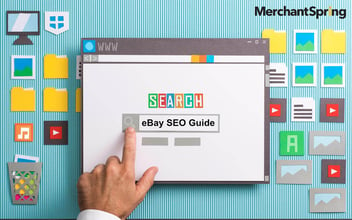

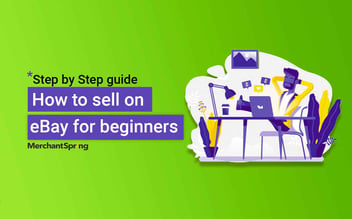
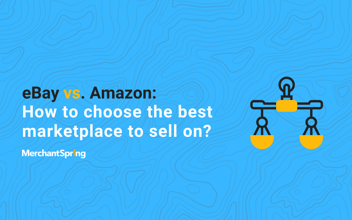
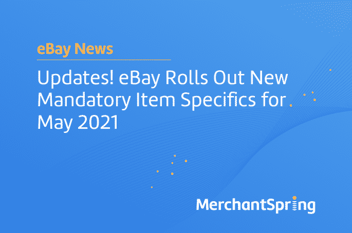
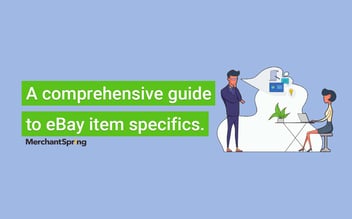

Add a Comment